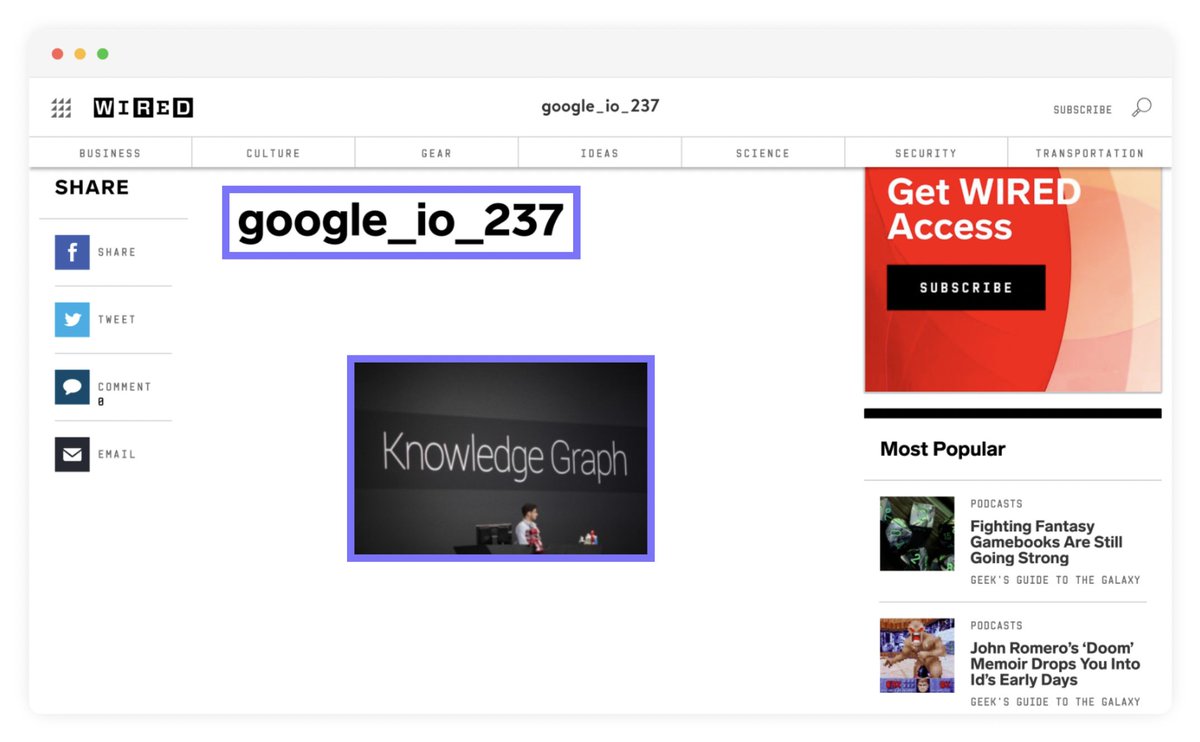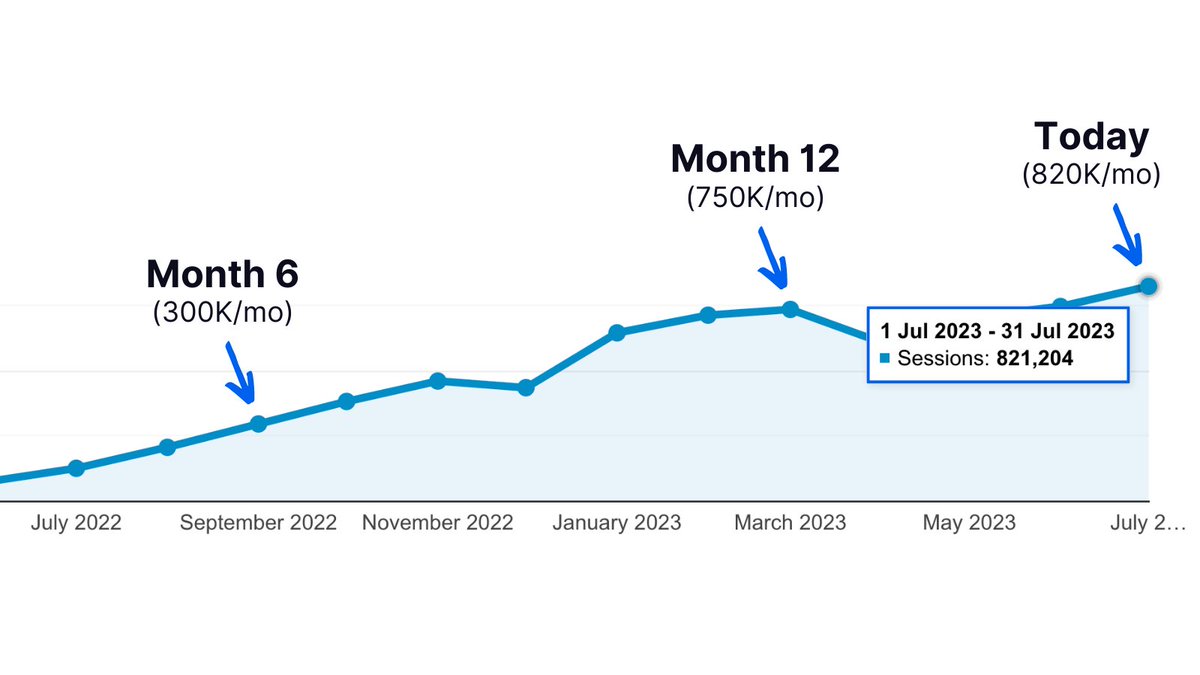After auditing 1,000s of websites for SEO:
- Multi-billion-dollar brands
- Popular SaaS companies
- Top ecommerce stores
- Large affiliate sites
And everything in between...
Here are the 12 most common issues found:
- Multi-billion-dollar brands
- Popular SaaS companies
- Top ecommerce stores
- Large affiliate sites
And everything in between...
Here are the 12 most common issues found:
This is one of the most important SEO posts you'll read this month (or even this year).
For that reason, I've called in @ViperChill.
- Started doing SEO 16 years ago
- Audited 1,000+ websites on video
- Creator of the SEO Blueprint course
- Founder of the Detailed SEO Extension
For that reason, I've called in @ViperChill.
- Started doing SEO 16 years ago
- Audited 1,000+ websites on video
- Creator of the SEO Blueprint course
- Founder of the Detailed SEO Extension
1. Image pages (@ViperChill)
Use WordPress? Every image you've ever uploaded may have its own page, which Google indexes.
I found this on 30% of WordPress sites I've audited...
Use WordPress? Every image you've ever uploaded may have its own page, which Google indexes.
I found this on 30% of WordPress sites I've audited...

Luckily, this is an easy fix.
WordPress plugins like Yoast have a built-in option to redirect attachment URLs to the image.
WordPress plugins like Yoast have a built-in option to redirect attachment URLs to the image.

Why does it matter?
Your site needs to maintain a clean footprint to help with its overall 'quality score'.
I avoid indexing low-quality pages in Google that I wouldn't want searchers to find.
Your site needs to maintain a clean footprint to help with its overall 'quality score'.
I avoid indexing low-quality pages in Google that I wouldn't want searchers to find.
2. HTTP pages (@jakezward)
As you'll know, all pages on your site need to be secure (https).
But you'd be surprised how many sites still have pages ranking which aren't secure.
As you'll know, all pages on your site need to be secure (https).
But you'd be surprised how many sites still have pages ranking which aren't secure.

Use the 'site:domain -inurl:https' search command to find these non-secure pages.
This search command can also help you find other unusual pages that probably shouldn't be indexing.
This search command can also help you find other unusual pages that probably shouldn't be indexing.

3. Pages you don't even know about (@ViperChill)
Find pages you might not want to index (or even know existed).
Perform a site:domain search and use terms to discover these pages.
Find pages you might not want to index (or even know existed).
Perform a site:domain search and use terms to discover these pages.

Example of terms to try:
- "Lorem ipsum"
- Portfolio
- Demo
- Index
- Error
- Test
Or perform a blank site:domain search and look for any odd titles that might be low-quality pages.
- "Lorem ipsum"
- Portfolio
- Demo
- Index
- Error
- Test
Or perform a blank site:domain search and look for any odd titles that might be low-quality pages.
4. Matching intent (@jakezward)
"I'm not ranking for [keyword]" can mostly be answered by understanding the search intent.
Content type: Should it be a blog post or other?
Content format: Should it be a how-to or other?
Content angle: What audience should it be targeting?
"I'm not ranking for [keyword]" can mostly be answered by understanding the search intent.
Content type: Should it be a blog post or other?
Content format: Should it be a how-to or other?
Content angle: What audience should it be targeting?
5. Tags and categories (@ViperChill)
Another common source of thin content on a site is going overboard on tags and categories.
They're great in moderation.
But not when these pages:
- Are empty
- Only have one post/item
- Haven't been updated in years
Another common source of thin content on a site is going overboard on tags and categories.
They're great in moderation.
But not when these pages:
- Are empty
- Only have one post/item
- Haven't been updated in years
This applies to ecommerce, forums, and any other sites with a blog.
I avoid having a significant number of categories, tags or collections with 0-2 items.
I avoid having a significant number of categories, tags or collections with 0-2 items.

6. Title and H1 (@jakezward)
Updating dates in your blog title?
Make sure you don't just change your H1 but also the title that
shows in Google (or vice-versa).
Updating dates in your blog title?
Make sure you don't just change your H1 but also the title that
shows in Google (or vice-versa).

Easily find and fix these pages with 'site:domain intitle:[previous year]'.
Then use @ViperChill's free Detailed SEO Extension () to quickly check the page's title. detailed.com/extension/

Then use @ViperChill's free Detailed SEO Extension () to quickly check the page's title. detailed.com/extension/

7. Old publish dates (@ViperChill)
Avoid older dates showing up against recently published or updated content.
This hurts your CTR and, from my experiments, your rankings.
Avoid older dates showing up against recently published or updated content.
This hurts your CTR and, from my experiments, your rankings.

Here's one way to find this problem using Google:
- Perform a site:domain search
- Select tools (on the right)
- Enter last year's date (or even further back)
- Perform a site:domain search
- Select tools (on the right)
- Enter last year's date (or even further back)

8. Heading tags (@jakezward)
It may seem basic to some, but I still regularly see sites not using heading tags correctly.
It may seem basic to some, but I still regularly see sites not using heading tags correctly.

Here are some basic rules I follow:
1. Include only 1 H1 per page
2. Use the same title for the H1 and the meta title
3. Don't over-optimise titles with keyword stuffing
4. Order H2-H6s properly, e.g. don't go from H2 to H4 without H3 in between
5. Make them incredibly skimmable
1. Include only 1 H1 per page
2. Use the same title for the H1 and the meta title
3. Don't over-optimise titles with keyword stuffing
4. Order H2-H6s properly, e.g. don't go from H2 to H4 without H3 in between
5. Make them incredibly skimmable
9. Redirected links (@ViperChill)
Ideally, key navigational links should not go through a redirect.
- http to https
- www to non-www
- trailing-slash to no trailing-slash
Ideally, key navigational links should not go through a redirect.
- http to https
- www to non-www
- trailing-slash to no trailing-slash

I hear you:
“A 301/308 redirect should pass all the ‘weight’, so it’s fine...”
Why do it if you don’t need to?
Here's why:
It’s an (albeit, slightly) slower experience for users and
increases the chance of creating redirect chains down the road.
“A 301/308 redirect should pass all the ‘weight’, so it’s fine...”
Why do it if you don’t need to?
Here's why:
It’s an (albeit, slightly) slower experience for users and
increases the chance of creating redirect chains down the road.
10. Redirect chains (@jakezward)
Redirect chains occur when there's more than one redirect between the initial URL and the final URL.
For example:
Redirect chains occur when there's more than one redirect between the initial URL and the final URL.
For example:

Similar to Glen's previous point, ideally these 301s should be fixed and not go through a redirect chain.
They can impact:
- Crawl budget
- Page loading times
- General user experience
- 'Power' of your internal/backlinks
I find redirect chains using Screaming Frog.
They can impact:
- Crawl budget
- Page loading times
- General user experience
- 'Power' of your internal/backlinks
I find redirect chains using Screaming Frog.
11. Canonical interlinks (@ViperChill)
Avoid sending key internal links to pages you’re not trying to rank (e.g. they canonicalise elsewhere).
Avoid sending key internal links to pages you’re not trying to rank (e.g. they canonicalise elsewhere).

This is extremely common for ecommerce sites on Shopify.
Not the end of the world, but sometimes entire sites are built
this way which isn't ideal.
It's nothing a developer can't fix.
Not the end of the world, but sometimes entire sites are built
this way which isn't ideal.
It's nothing a developer can't fix.
12. 404 pages with good backlinks (@jakezward)
Many site owners delete pages without redirecting them to
another page.
This can be ok, but you should first check to see if the page
has existing backlinks.
If it does, you can pass the 'power' of the backlinks to another page.
Many site owners delete pages without redirecting them to
another page.
This can be ok, but you should first check to see if the page
has existing backlinks.
If it does, you can pass the 'power' of the backlinks to another page.
I use Screaming Frog to find these 404s:
1. Connect to Ahrefs' API
2. You'll see backlinks per URL
3. Find 404 pages with backlinks
4. 301 to a page you want to rank
1. Connect to Ahrefs' API
2. You'll see backlinks per URL
3. Find 404 pages with backlinks
4. 301 to a page you want to rank

Bonus: Superpixels (@ViperChill)
Once you’ve taken care of the fundamentals, add ‘Superpixels’ everywhere you can.
In my 1,000+ audits, the most common issue was this:
Sites were so… similar.
No personality. Just pushing out content for Big G.
Once you’ve taken care of the fundamentals, add ‘Superpixels’ everywhere you can.
In my 1,000+ audits, the most common issue was this:
Sites were so… similar.
No personality. Just pushing out content for Big G.
Superpixels = In the standard things you put on your site, try to make them memorable. Personal.
Make visitors do a double take.
To me, this makes earning links, subscribers and sales much easier.
Make visitors do a double take.
To me, this makes earning links, subscribers and sales much easier.

Before you go...
I've used @ViperChill's tool (Detailed SEO Extension) daily since it launched.
Download for free and get SEO insights at the click of a button here: detailed.com/extension/
I've used @ViperChill's tool (Detailed SEO Extension) daily since it launched.
Download for free and get SEO insights at the click of a button here: detailed.com/extension/
@ViperChill That's a wrap!
If you enjoyed this thread:
1. Follow me @jakezward
2. Follow Glen @ViperChill
2. RT the tweet below to share it
If you enjoyed this thread:
1. Follow me @jakezward
2. Follow Glen @ViperChill
2. RT the tweet below to share it
https://twitter.com/1645041117216362498/status/1696131339311866309
@ViperChill Warning: Don’t make big changes based on this carousel.
First check that pages:
- Aren’t getting traffic
- Have good backlinks
- Are important for users
- Or similar…
Before you start noindexing or deleting them.
These tips help, but we don't know your specific situation.
First check that pages:
- Aren’t getting traffic
- Have good backlinks
- Are important for users
- Or similar…
Before you start noindexing or deleting them.
These tips help, but we don't know your specific situation.
• • •
Missing some Tweet in this thread? You can try to
force a refresh

 Read on Twitter
Read on Twitter











